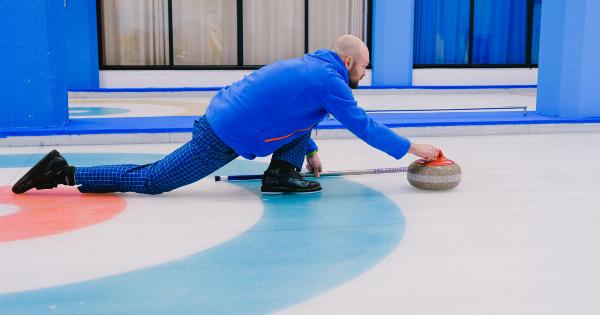Osgood-Schlatter’s disease is a common condition that affects the knees of growing children and adolescents. It is characterized by pain and swelling just below the kneecap, where the patellar tendon inserts into the shinbone (tibia).
Causes and Risk Factors
The exact cause of Osgood-Schlatter’s disease is still not fully understood.
However, it is believed to occur when the quadriceps muscles, which are found at the front of the thigh, pull on the patellar tendon, causing stress and pressure on the growth plate of the shinbone. This stress is more common during growth spurts when bones are growing rapidly.
There are several factors that can increase a child’s risk of developing Osgood-Schlatter’s disease:.
- Rapid growth and puberty: During growth spurts, the bones, tendons, and muscles may grow at different rates, leading to an increased risk of injury.
- Participation in sports: Activities that involve running, jumping, or repetitive knee movements can put additional strain on the knee joint, increasing the risk of injury.
- Tight muscles and inflexibility: If a child has tight quadriceps muscles or hamstrings, it can alter the mechanics of the knee joint, making it more prone to injury.
- Genetics: Some studies suggest that genetics may play a role in the development of Osgood-Schlatter’s disease, although more research is needed.
Symptoms of Osgood-Schlatter’s Disease
If your child is experiencing Osgood-Schlatter’s disease, they may exhibit the following symptoms:.
- Knee pain: The main symptom of Osgood-Schlatter’s disease is knee pain, which is usually located just below the kneecap. The pain may be mild to moderate and may worsen with activity or after prolonged periods of sitting or kneeling.
- Swelling: Along with the pain, the affected area may become swollen or tender to the touch.
- Limping or difficulty walking: In more severe cases, the pain and swelling may cause limping or difficulty with walking or participating in physical activities.
Diagnosis and Treatment
If you suspect that your child may have Osgood-Schlatter’s disease, it is important to consult a healthcare professional for an accurate diagnosis.
The doctor will typically perform a physical examination of the knee and ask about your child’s symptoms and medical history.
In some cases, imaging tests such as X-rays or an MRI may be ordered to rule out other conditions or to assess the severity of the injury.
Treatment for Osgood-Schlatter’s disease focuses on managing symptoms and promoting healing. The following treatment options may be recommended:.
- Rest and activity modification: It is important to encourage your child to take a break from activities that aggravate the pain and to modify their activity level to reduce stress on the knee joint.
- Ice and heat therapy: Applying ice packs to the affected area can help reduce pain and swelling. Heating pads or warm compresses may also provide relief.
- Physical therapy: A physical therapist can recommend exercises and stretches to improve flexibility, strength, and balance of the muscles around the knee.
- Over-the-counter pain relievers: Nonsteroidal anti-inflammatory drugs (NSAIDs), such as ibuprofen, can be used to alleviate pain and reduce inflammation. However, it is important to consult a healthcare professional before giving any medication to your child.
- Use of knee braces or straps: These devices can provide support to the knee and help alleviate symptoms during physical activity.
Preventing Osgood-Schlatter’s Disease
While Osgood-Schlatter’s disease cannot always be completely prevented, there are measures you can take to reduce the risk of your child developing this condition:.
- Encourage proper warm-up and stretching before exercise or physical activity.
- Promote strength and flexibility training to ensure that muscles are balanced and in good condition.
- Ensure that your child wears appropriate footwear for their chosen sport or activity.
- Emphasize the importance of rest and recovery between intense training sessions or competitions.
- Monitor your child’s growth and consult a healthcare professional if you notice any unusual symptoms or changes in their physical development.
When to Seek Medical Attention
If your child’s knee pain and swelling persist or worsen despite conservative measures, it is important to consult a healthcare professional. Additionally, seek medical attention if your child experiences:.
- Severe pain
- Limited movement
- Signs of infection, such as redness, warmth, or discharge from the affected area
A healthcare professional will be able to provide a thorough examination and determine if any further treatment or intervention is necessary.






















